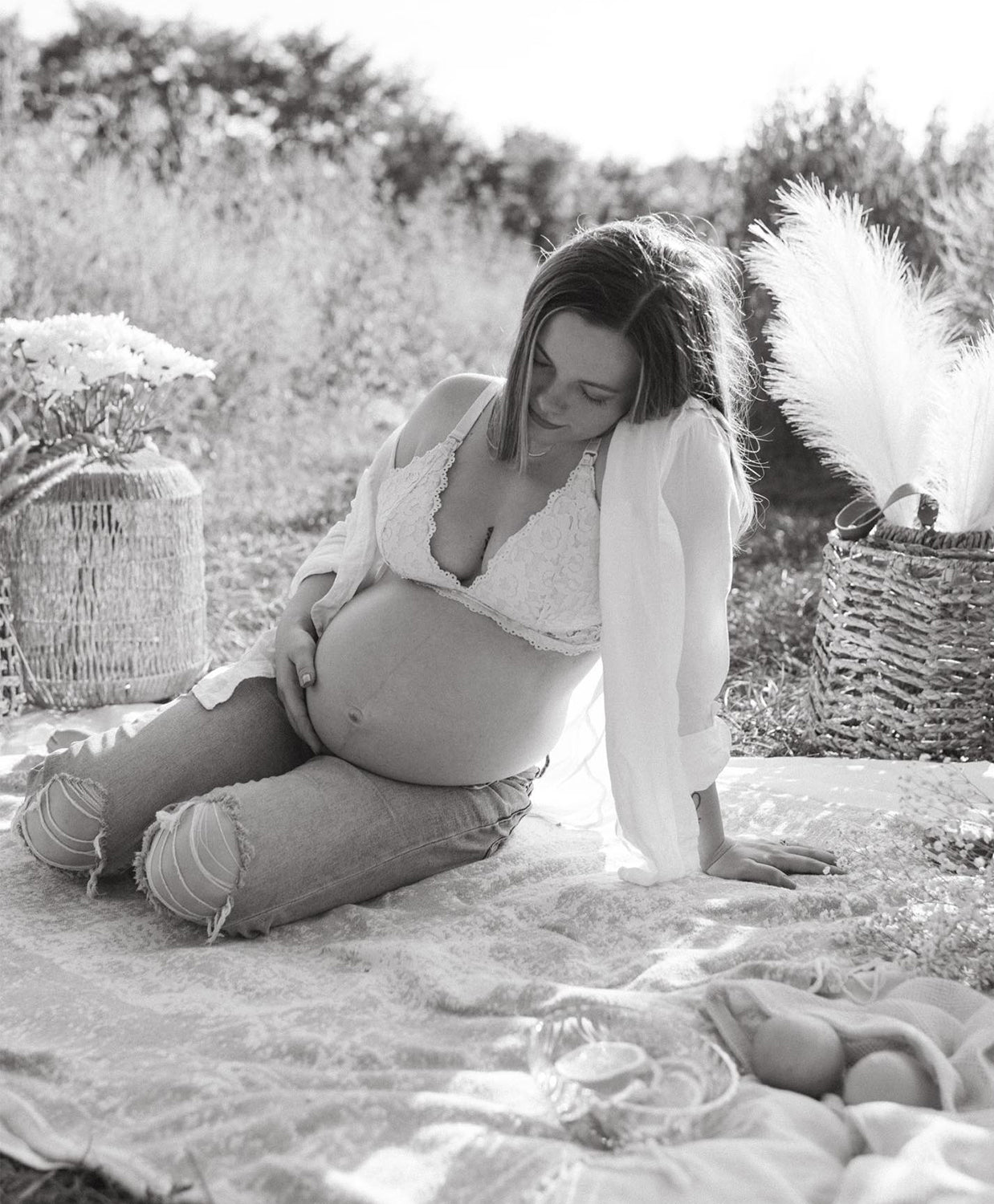Cluster feeding: Everything you need to know

Cluster feeding happens when a baby suddenly starts eating a lot more often, or in clusters, for some time. It normally lasts a few hours at a time and will be different from your baby's usual feeding habits.
Cluster feeding is a normal behavior in babies. It is most common in breastfeeding newborns within the first few weeks. It does not necessarily imply that there is a problem with your milk supply or your baby.
By the time your little one comes, you’ll probably have prepared mentally for all the nighttime feedings you’ll have to endure. After all, sleep deprivation is a normal part of being a new mom. What may surprise you is the sheer fatigue that comes with infant cluster feeding. It's one of those new parenting things you won't get until you go through it. The good news is that it is completely normal and, luckily, won’t last forever.
That said, knowing what to expect might help you manage the situation better instead of panicking when the feeding frenzy starts. That’s why we decided to create this detailed guide to cluster feeding, featuring everything you need to know about it as well as how to cluster feed and prepare for it.
What is cluster feeding?
As mentioned earlier, cluster feeding is a baby’s tendency to feed in clusters throughout the day. Newborns need to be fed at least eight times in 24 hours during their first few days of life. However, babies rarely have a predictable eating pattern, and they may want to eat more often than this. When this happened, they will cluster or group numerous feedings within a shorter period, which is called cluster feeding.
According to the American Academy of Pediatrics, a typical newborn feeding session will take between 15 and 20 minutes. This will leave your little one satisfied for three to four hours.
Cluster feeding, on the other hand, involves a baby having numerous feedings within a short length of time followed by longer stretches of sleep. When your baby's feeding pattern abruptly shifts for two or three days and then returns to a more normal feeding pace, you'll know they are cluster feeding.
Cluster feeding is natural, and while not every infant cluster feeds, it can occur with any newborn; breastfed or formula-fed. However, if you're a breastfeeding mom, cluster feeding is typically more difficult because your milk may still be coming in and you may also be struggling with the physical and emotional post-partum issues.
If you are exclusively pumping, it can feel like you can't keep up with your baby's needs especially if you don't have a large enough milk reserve built up and ready to go. If you formula feed, you will also still notice your baby's increased hunger, but you will have the advantage of being able to offer additional milk on demand.
Why do babies cluster feed?
No one knows why babies cluster feed. However, there are numerous theories around it. Many experts believe that it occurs when a newborn goes through a physical or developmental growth spurt. Others believe that newborn cluster feeding may be related to the baby's habits while in utero.
If you are a breastfeeding mom, your little one’s cluster feeding may make you question if your baby's increased hunger is due to a lack of milk supply or if you're just not feeding them enough. Logically, your mind would go to that conclusion, yet it couldn’t be further from the truth. A baby's cluster feeding has been shown to help raise and establish the mother’s milk production in the first few days. The baby's frequent feeding helps in the hormonal process of transforming the mother’s colostrum into the abundant mature milk, a process that takes place 3 to 7 days postpartum.
When does cluster feeding start?
Cluster feeding can be difficult to detect since most newborns don’t have a predictable eating or sleeping pattern. Your little one may be cluster feeding if:
- They are only a few days or weeks old
- They're displaying typical hunger signs or won't stop crying unless they're fed
- They want to feed all the time, or they feed regularly for short sessions each time
- Nothing else appears to be wrong, and they appear to be content when feeding
- They have regular wet and dirty diapers
Cluster feeding is typically more common in the evenings. However, for older infants, there may be several days in a row when they eat significantly more than normal throughout the day. This might be because of growth spurts or teething.
What is a typical feeding schedule for a baby?
Every baby is unique, but a typical feeding session for a newborn who isn't cluster feeding might last anywhere from 10 to 30 minutes. Experts recommend feeding your newborn infant at least 8 to 12 times each day.
Feeding your baby frequently is important because:
- It prevents jaundice
- It encourages healthy weight gain in infants
- It helps mothers develop their milk supply
How long will cluster feeding last?
Baby cluster feeding occurs in bursts that last a few days at a time. However, during the first few weeks of life, as your milk supply grows, you should expect your baby to want to cluster feed more frequently.
Breastfed babies become more predictable after the first few weeks. Cluster feeding ages are generally three weeks, six weeks, three months, and six months, and correspond to growth spurts. However, the first three weeks of infant cluster feeding are generally the longest and most intense for parents.
As newborns grow, they start to need more and more milk in a single meal to satisfy their growing appetites. So how can you know if their increased demand is due to cluster feeding or if it is simply part of their natural growth and development? Here are some common signs of cluster feeding to look out for:
- Having a normal, full feeding session and then asking to be fed again 30 to 60 minutes later, then feeding the same amount as they would in a regular feeding
- Sleeping deeply for lengthy periods after two or three close feedings
- Acting irritable during feedings, looking for the nipple when it's right in front of them, or latching on and off
- When they are awake but not on the breast, they act fussy or agitated
- Feeding in short, frequent bursts that are close together
- Perpetual feedings that mostly happen in the early evening and late at night
How to cluster feed
Cluster feeding can be extremely difficult for a breastfeeding parent. Things get even worse when it is only your first few weeks of parenthood and you are still learning how to nurse. Here are some things you can do to make things a bit easier:
- Keep track of how many times the baby has been fed. Cluster feeders still have the expected number of feeding sessions. They are just not spread uniformly throughout the day/night.
- Allow your partner or a support person to assist you by doing as much as possible in between feedings so that you can get some rest.
- Don’t try to push or postpone feedings to get your baby back on a schedule. This will just make them fussier.
- Monitor their weight increase if you want to be sure they're getting enough milk. Babies should gain about an ounce (or more) of weight every day as mom's milk transitions from colostrum to milk.
- Stay hydrated and fed throughout this time to keep yourself healthy and your supply plentiful. Keep a large bottle of water and food nearby to keep the mother hydrated and fed.
- Distract yourself when you can. You can set up a nursing space in front of the television or listen to audiobooks as you breastfeed.
- If you have an older child, sit on the floor or on a couch to allow you to engage the older child if necessary.
- Consider making plans to express milk to feed the baby.
- Get comfortable as you feed your little one. Consider investing in a good quality nursing bra to help make sure that you are comfortable throughout the multiple feeding sessions.
Final Thoughts
You may be anxious for a break, but the fact is that if you're wondering how to stop cluster feeding, it just has to run its course. Surrendering and letting the baby take the lead is the best thing you can do. And with the tips and tricks outlined here, that should be relatively easy to pull off. Just remember, indulge your little one by feeding them when they need it and don’t forget to wear something comfortable as you do it, like one of our award-winning nursing bras.
Newborn cluster feeding is difficult for parents. However, encourage yourself in the fact that it will not last forever. Lean on your support system and try to get some rest whenever you can until this phase passes. You can do it!
Different Ways To Hold Your Baby When Breastfeeding
How new moms can boost their milk supply
The ultimate list of breastfeeding essentials every mom should have
How dads can be supportive during breastfeeding
Breastfeeding FAQ: Everything You Need to Know
Top 10 Struggles And Solutions For Breastfeeding Moms
SUBCRIBE FOR NEWSLETTER
Shop today with 5% OFF your first order of all products storewide


























